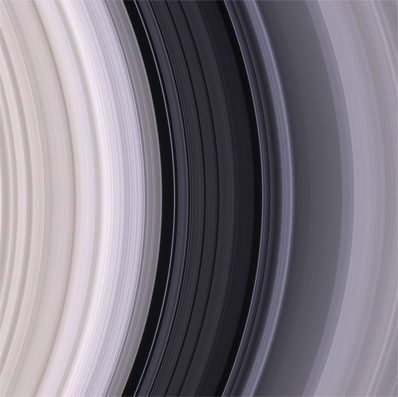
Spaceflight Now +

|

|

|

|

Premium video content for our Spaceflight Now Plus subscribers.

Pluto New Horizons
 Check out NASA's Pluto-bound New Horizons spacecraft undergoing thermal blanket installation inside the cleanroom at Kennedy Space Center's Payload Hazardous Servicing Facility in preparation for launch in January from the Cape. Check out NASA's Pluto-bound New Horizons spacecraft undergoing thermal blanket installation inside the cleanroom at Kennedy Space Center's Payload Hazardous Servicing Facility in preparation for launch in January from the Cape.

 Play video Play video

Mountains of creation
 A new image from NASA's Spitzer Space Telescope reveals billowing mountains of dust ablaze with the fires of stellar youth. The majestic infrared view from Spitzer resembles the iconic "Pillars of Creation" picture taken of the Eagle Nebula in visible light by NASA's Hubble Space Telescope. A new image from NASA's Spitzer Space Telescope reveals billowing mountains of dust ablaze with the fires of stellar youth. The majestic infrared view from Spitzer resembles the iconic "Pillars of Creation" picture taken of the Eagle Nebula in visible light by NASA's Hubble Space Telescope.

 Play video Play video

Space history: STS-51A
 This week marks the anniversary of arguably the most daring and complex space shuttle mission. The astronauts successfully launched two satellites and then recovered two others during extraordinary spacewalks by astronauts using jet-propelled backpacks and pure muscle power. This week marks the anniversary of arguably the most daring and complex space shuttle mission. The astronauts successfully launched two satellites and then recovered two others during extraordinary spacewalks by astronauts using jet-propelled backpacks and pure muscle power.

 Play video Play video

Space station EVA
 Commander Bill McArthur and flight engineer Valery Tokarev conduct a 5 1/2-hour spacewalk outside the International Space Station, installing a TV camera, doing repair chores and jettisoning a failed science probe. Commander Bill McArthur and flight engineer Valery Tokarev conduct a 5 1/2-hour spacewalk outside the International Space Station, installing a TV camera, doing repair chores and jettisoning a failed science probe.

 Play video Play video

Griffin testifies
 NASA Administrator Mike Griffin goes before the U.S. House of Representative's Science Committee to provide an update on the moon-Mars exploration program, the future of the space shuttle and space station, possible servicing of Hubble, cost overruns on the James Webb Space Telescope and the agency's aeronautics research. NASA Administrator Mike Griffin goes before the U.S. House of Representative's Science Committee to provide an update on the moon-Mars exploration program, the future of the space shuttle and space station, possible servicing of Hubble, cost overruns on the James Webb Space Telescope and the agency's aeronautics research.

 Play video Play video

The Earth from space
 Return to flight space shuttle commander Eileen Collins narrates an interesting slide show featuring some favorite photographs of Earth taken during her previous shuttle missions. Return to flight space shuttle commander Eileen Collins narrates an interesting slide show featuring some favorite photographs of Earth taken during her previous shuttle missions.

 Play video Play video

 Become a subscriber Become a subscriber
 More video More video

|

|

|

|
|

|

Graceful lanes of ice
CASSINI PHOTO RELEASE
Posted: November 17, 2005

Credit: NASA/JPL/Space Science Institute
Download larger image version here
|
The dark Cassini Division, within Saturn's rings, contains a great deal of structure, as seen in this color image. The sharp inner boundary of the division (left of center) is the outer edge of the massive B ring and is maintained by the gravitational influence of the moon Mimas.
Spectroscopic observations by Cassini indicate that the Cassini Division, similar to the C ring, contains more contaminated ice than do the B and A rings on either side.
This view is centered on a region approximately 118,500 kilometers (73,600 miles) from Saturn's center. (Saturn is 120,500-kilometers-wide (74,900 miles) at its equator.) From left to right, the image spans approximately 11,000 kilometers (6,800 miles) across the ringplane.
Images taken using red, green and blue spectral filters were combined to create this view, which approximates what the human eye might see. The image was taken with the Cassini spacecraft narrow-angle camera at a distance of approximately 1.6 million kilometers (1 million miles) from Saturn. The image scale is 9 kilometers (6 miles) per pixel.
The Cassini-Huygens mission is a cooperative project of NASA, the European Space Agency and the Italian Space Agency. The Jet Propulsion Laboratory, a division of the California Institute of Technology in Pasadena, manages the mission for NASA's Science Mission Directorate, Washington, D.C. The Cassini orbiter and its two onboard cameras were designed, developed and assembled at JPL. The imaging operations center is based at the Space Science Institute in Boulder, Colo.
|

|

|

|

|



